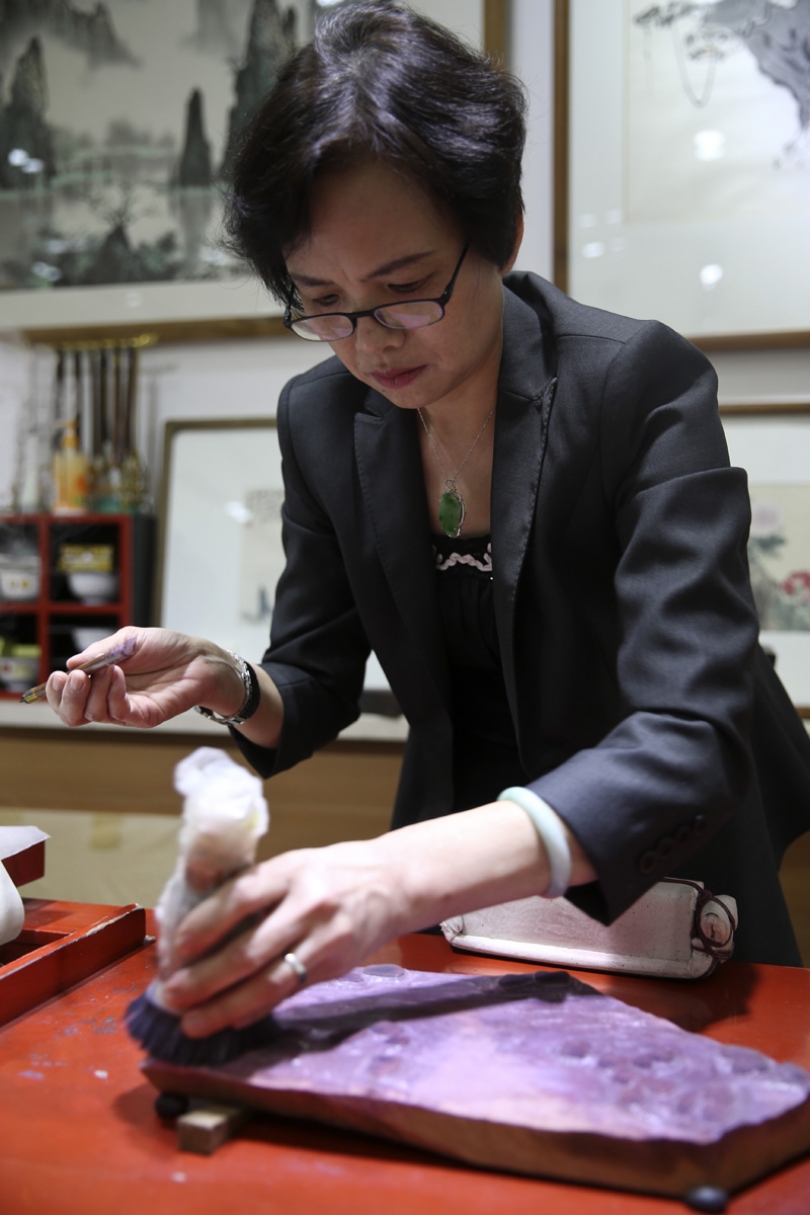Where masterpieces are reborn

A Beijing woodcut studio has been adding to China’s cultural |heritage for a century
Among the Hutongs of Liulichang in south Beijing, the smell of ink dominates, thanks to the stationery stores and shops selling traditional Chinese paintings and calligraphy. Rongbaozhai, which stands out even in a lane of facades reflecting ancient architecture, is a sanctuary for the capital’s literary fans.
Founded in 1672 as a paper store, it took its current name – which means “room with glorious treasures” – in 1894. It launched its woodblock-printing business two years later. Xiao Gang, 57, is the seventh-generation practitioner.
He spreads out several sheets of papers to make a facsimile of a piece by the great painter Qi Baishi (1864-1957). “Every time I add a new detail I use a separate sheet,” he says as he traces. The traced silhouette of the original work is used to carve seven woodcuts.
Xiao is in charge of the first step of a months-long process to duplicate a small-size masterpiece. “When we have orders for a piece like this, we need to create the layered feeling when printing them.”
Registration marks of varying types are added to align the differently coloured layers. The number of registrations depends on the number of colours in the original painting. Complicated paintings require hundreds of them. When Rongbaozhai printed the 10th-century masterpiece “Night Revels of Han Xizai” in 1979, 1,667 registrations were needed.
Xiao has been working in the Rongbaozhai printing studio since 1978, his daily work almost the same, but for four years it has entailed copying masterpieces housed in the Palace Museum.
“You need to be diligent. That’s all need to take this job – all the rest can be nurtured.”
Just the same, he says, many young people give up. “So even though the government promotes ‘the spirit of a craftsman’, we have to understand that loving the work is a prerequisite. If you don’t like what you’re doing and consider it only a job, you won’t have the patience.”
Woodblock printing from Rongbaozhai was among the first to be recognised as national-level “intangible cultural heritage”, in 2006. And last month, during a Unesco training session in Shenzhen, the Rongbaozhai techniques were chosen as an example of the sustainable development of intangible cultural heritage.
Zhao Huiping, 54, who’s been with Rongbaozhai for more than 30 years, is in charge of the final printing process. It’s work that’s in high demand these days, she says.
“Everything we print has to be identical to the original masterpiece – nothing can be changed – and this leaves little room for creativity. Sometimes we feel isolated from the outside world, but we must stay focused.”
Zhao understands nevertheless why the printer must sacrifice creativity. “These paintings are from the masters and that’s why they’re duplicated. If we add something of our own, it would be meaningless,” she says.
She likens the printing process to recreating the original. “Printing with water needs lots of technique to control the speed, strength and moisture to ensure high quality.”
The industry veteran says there’s much more she could learn, such as printing on silk. Though silk was commonly used in ancient Chinese painting, she rarely accepts commissions to recreate them.
“Sometimes we just have to admit that the material we get today isn’t fine enough. Maybe our predecessors were better at making it!”
Techniques have improved in some areas, though, Zhao says. Printers used to use several registration panels to express gradually changing colours, but that can be replicated today with just one registration, printing two or three similar colours. “Unlike the older generation, who often came from the grassroots, the new recruits are usually professional art students,” Xiao points out.
“It’s easier to pass on the techniques to them compared with other art forms where there is a worry about a lack of people to inherit the skills.”
The staff at Rongbaozhai agrees that printing by hand, which preserves the water-and-ink appearance of paintings, cannot be replaced by machines. And yet their workshop has adopted ideas of the modern assembly line. There are more than 40 professionals in the studio, but each one is in charge of just one step: tracing, carving or printing.
“In Japan an ukiyo-e practitioner might take part in every step,” says Lu Min, a 47-year-old carver, “but our style keeps people more focused on what they’re good at, thus producing the best results.”
RELATED





